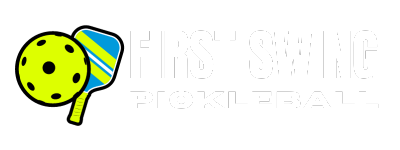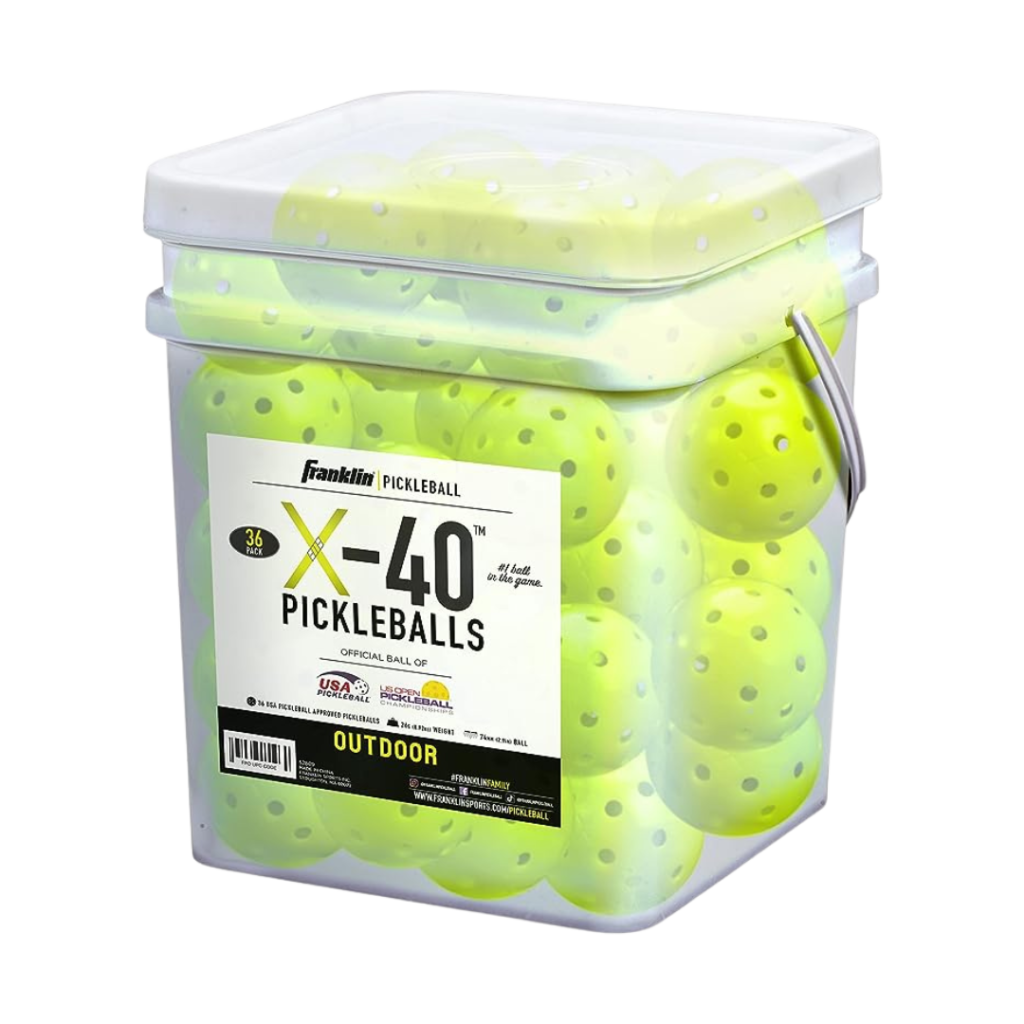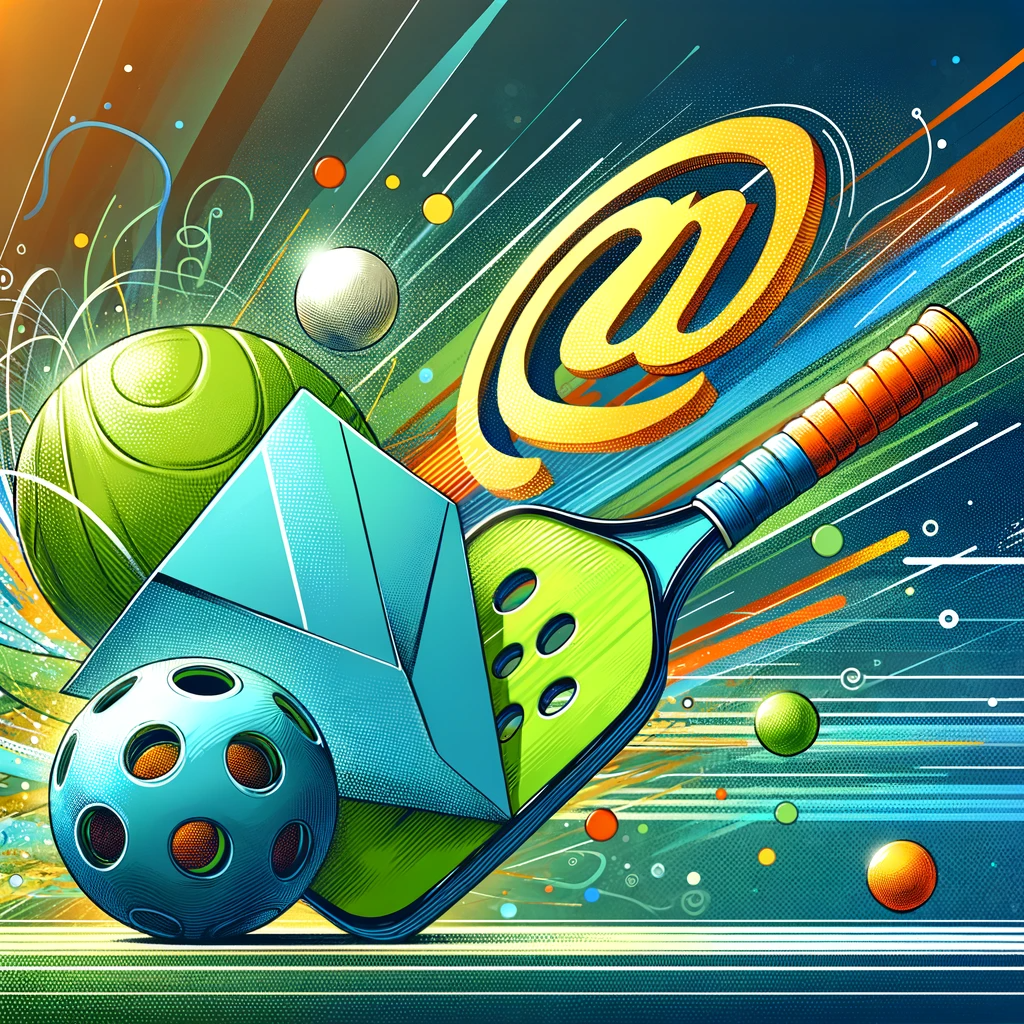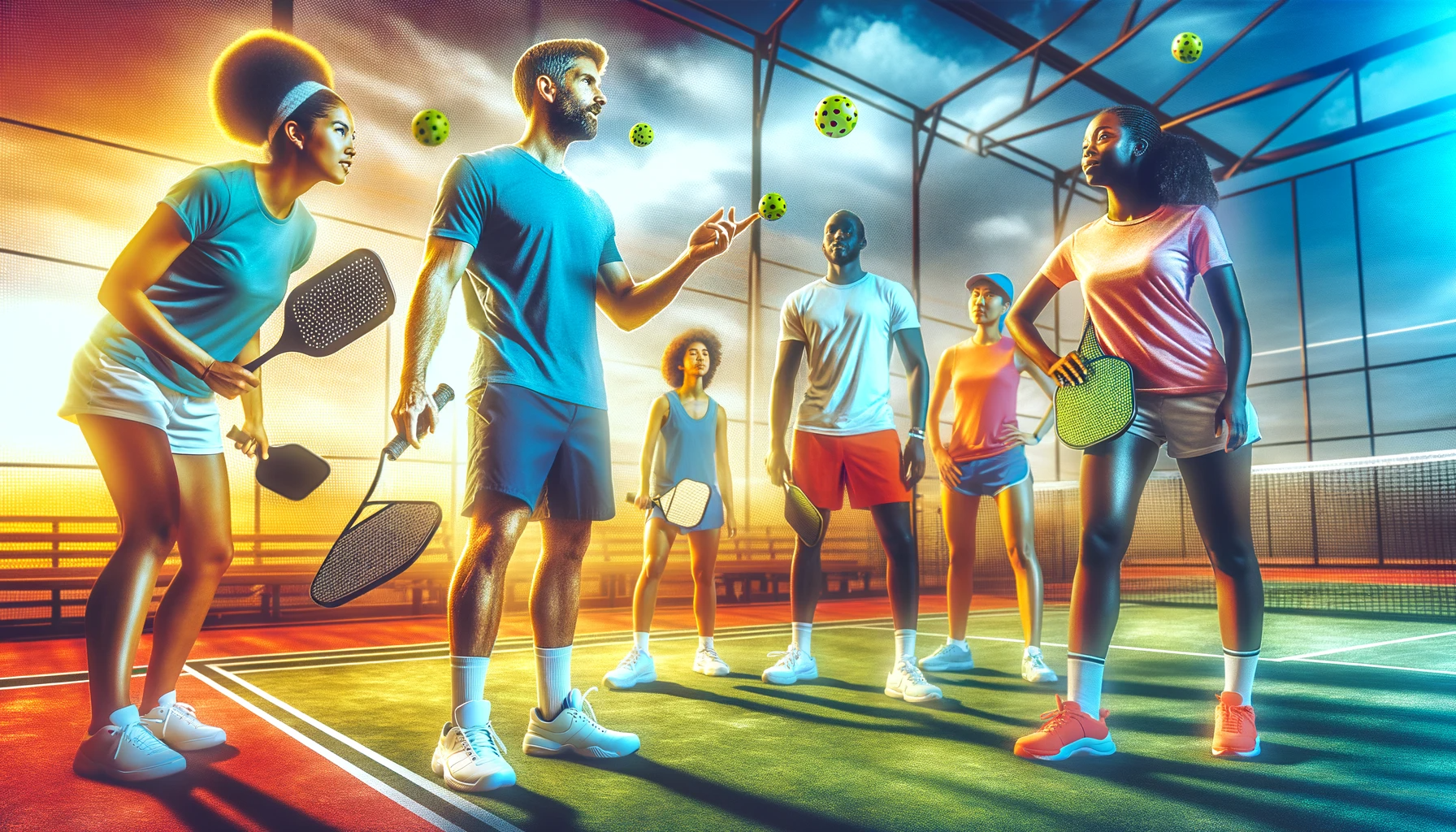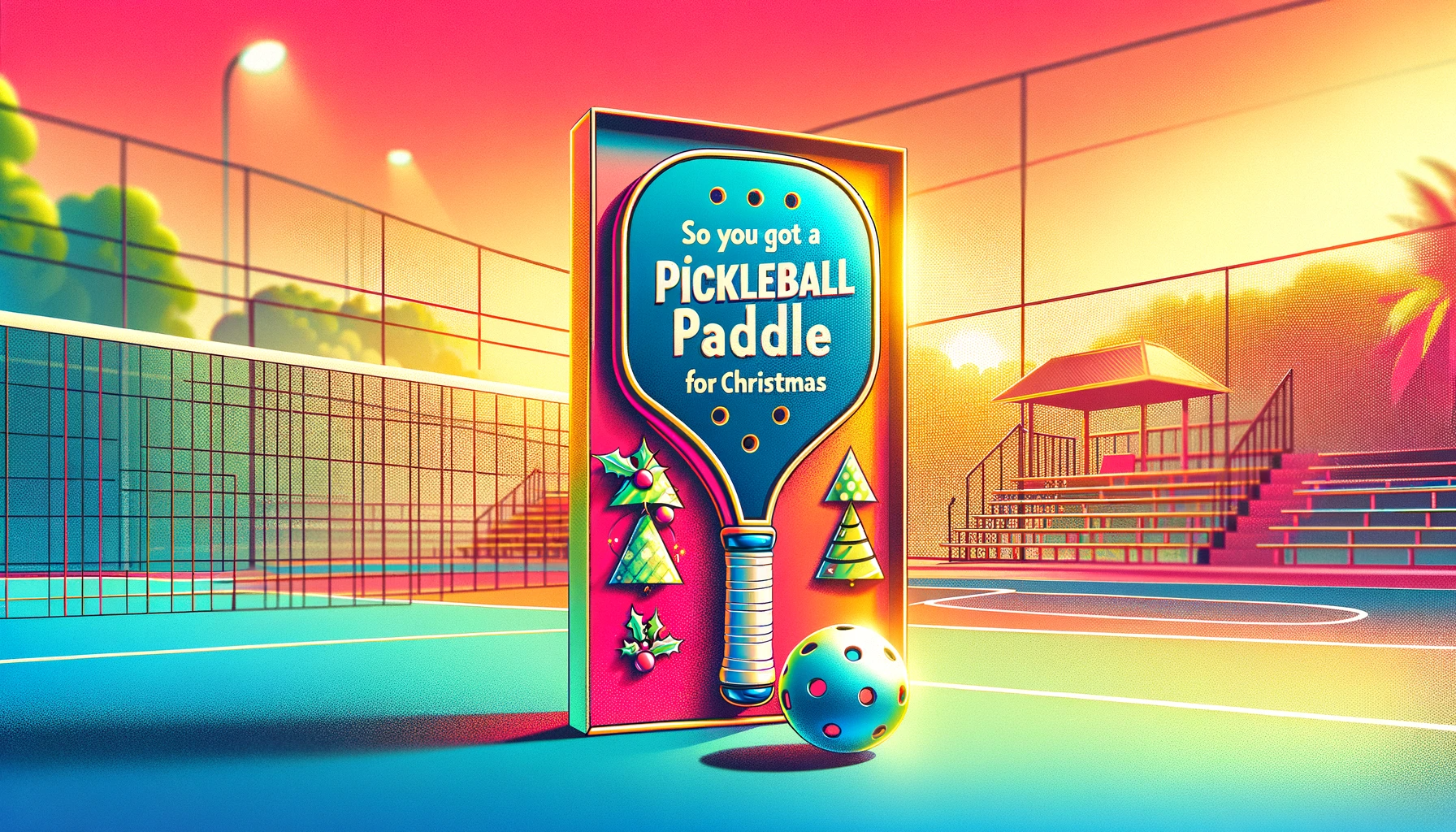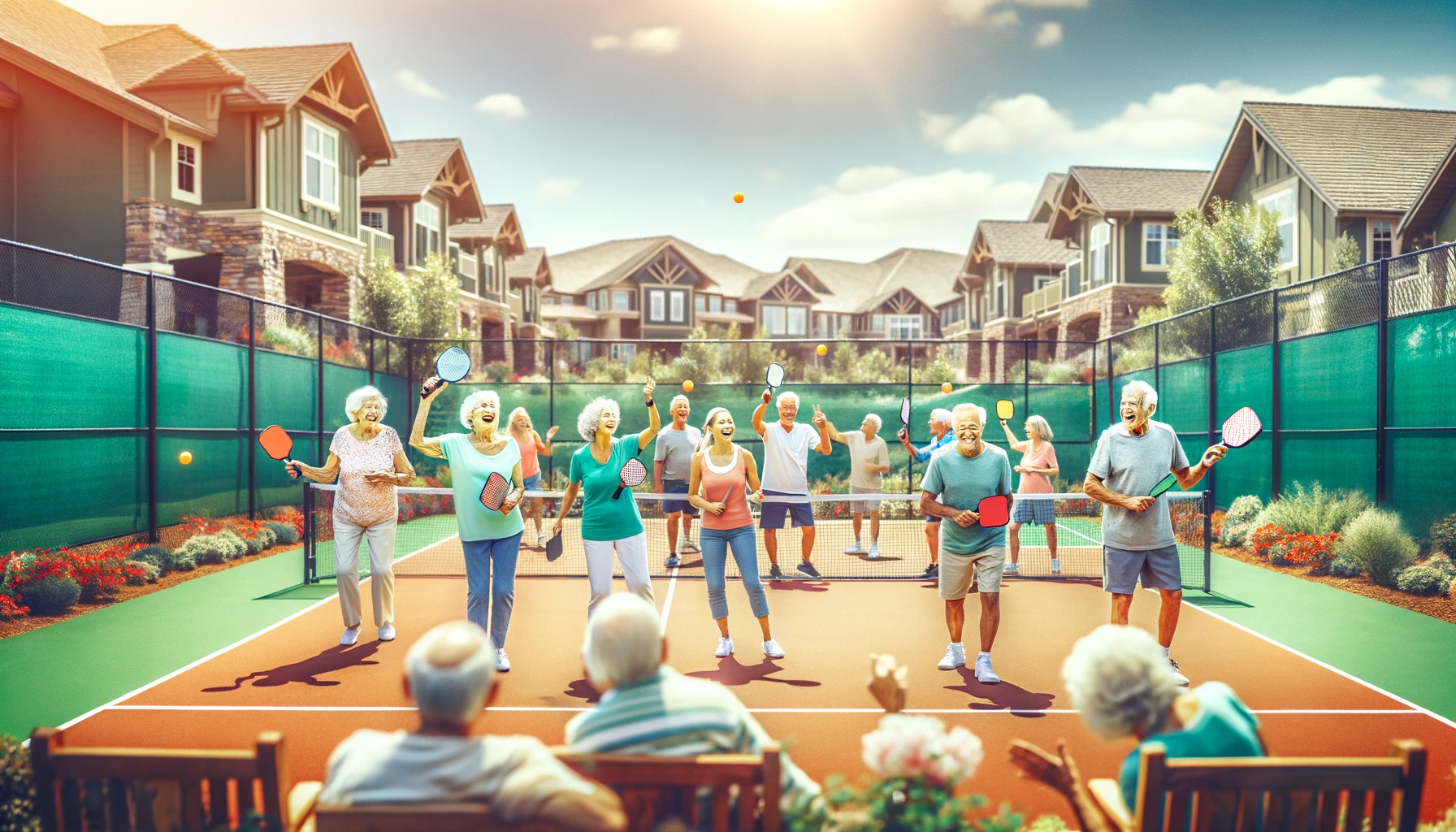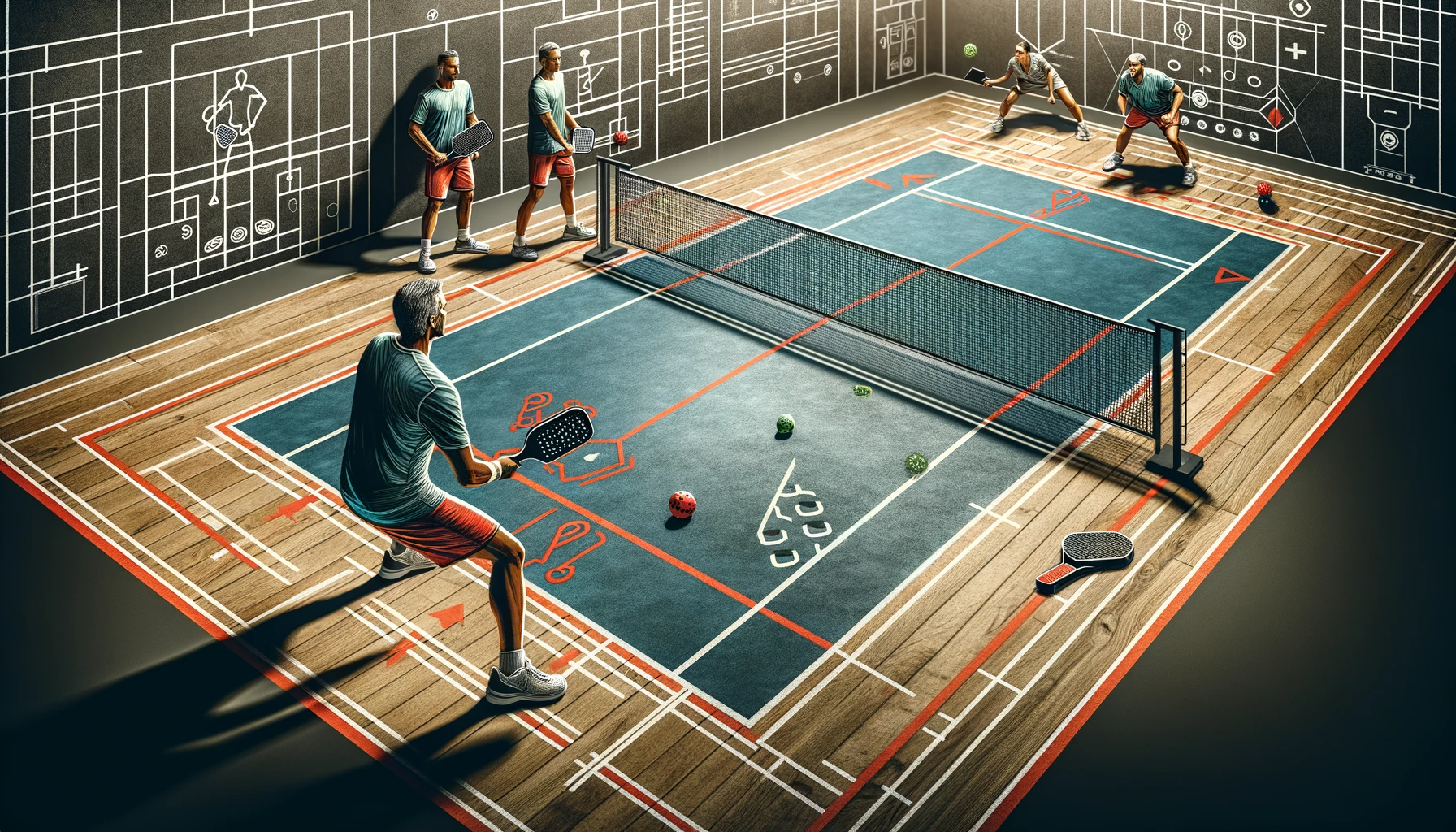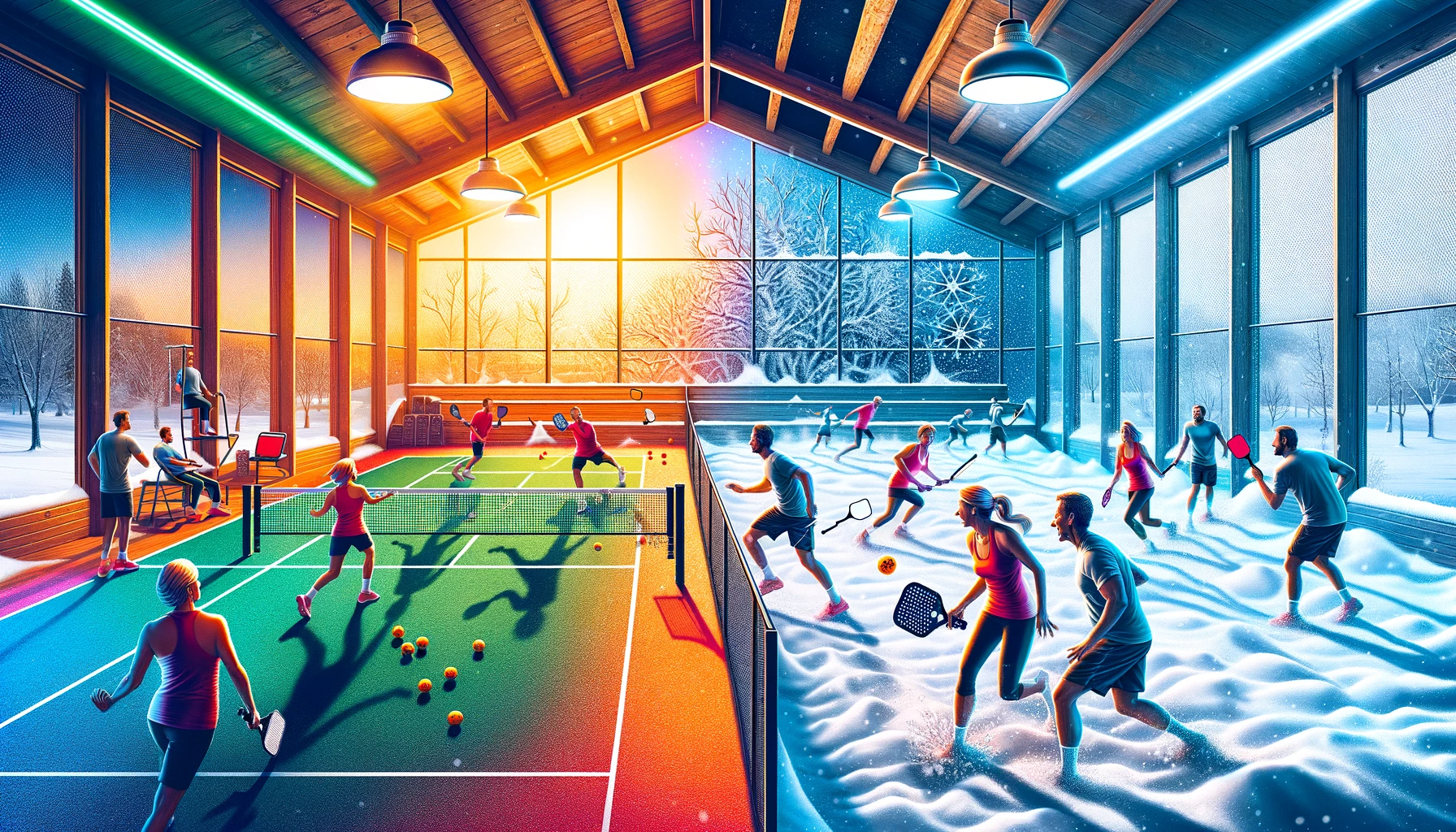
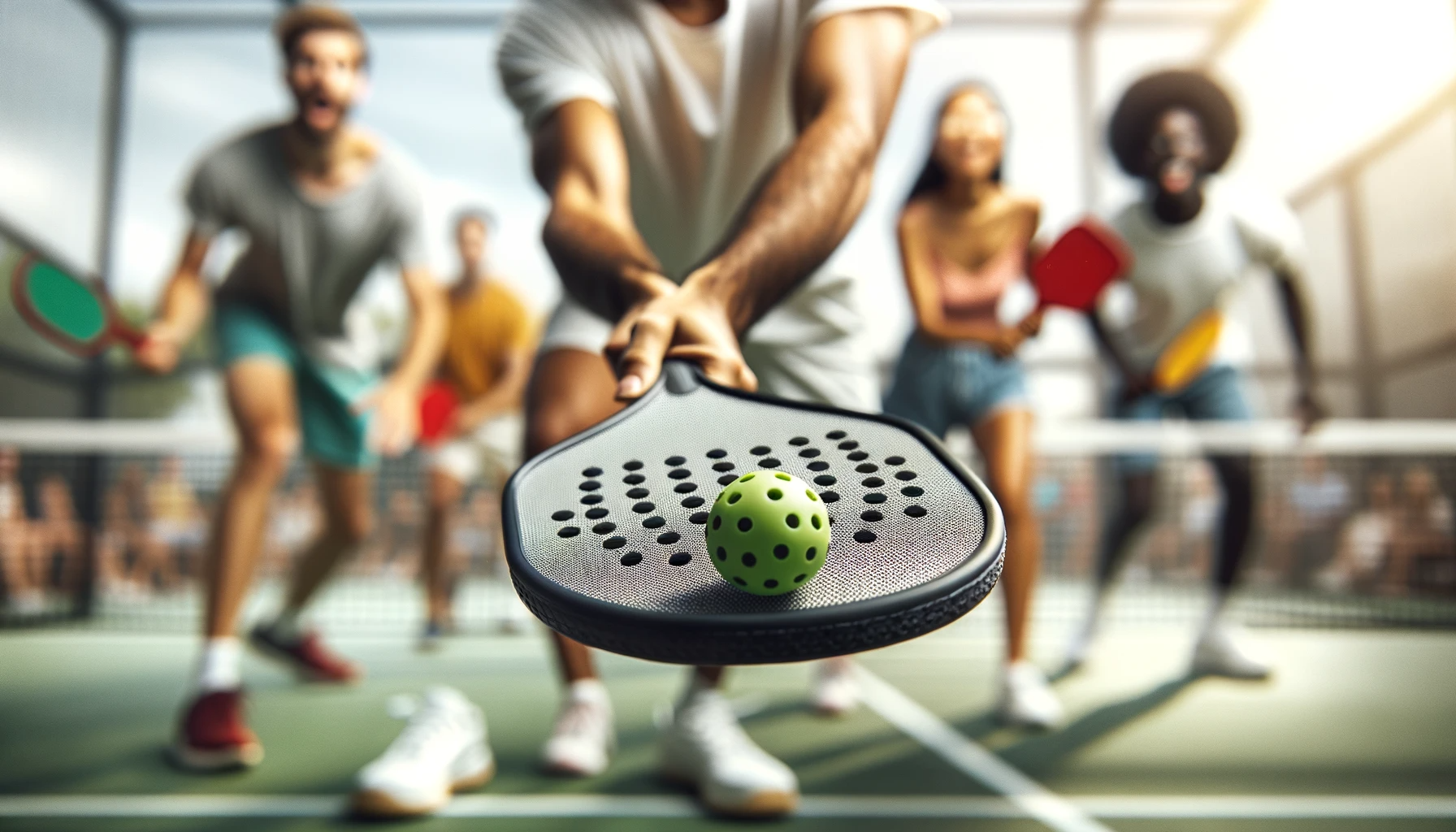
Understanding the Different Types of Pickleball Balls
Pickleball is a popular sport that combines elements of tennis, badminton, and table tennis. It is played with a paddle and a plastic ball with holes, similar to a wiffle ball. However, not all pickleball balls are the same. In fact, there are different types of pickleball balls that can greatly affect the game. In this article, we will explore the different types of pickleball balls and their characteristics, so you can choose the right one for your game.
The Impact of Ball Color on Pickleball Gameplay: What You Need to Know
Pickleball has been gaining popularity in recent years, and for good reason. It's a fun and fast-paced game that combines elements of tennis, badminton, and ping pong. But one aspect of pickleball that often goes overlooked is the type of ball used in the game. Many players may not realize that there are actually different types of pickleball balls, and the color of the ball can have a significant impact on gameplay. In this article, we'll take a closer look at the different types of pickleball balls and how their color can affect your game.
First, let's start with the basics. Pickleball balls are typically made of a hard plastic material, similar to a wiffle ball. They have holes all over the surface, which helps to reduce wind resistance and allows for better control and spin. The standard size for a pickleball ball is 2.87 inches in diameter and weighs between 0.78 and 0.935 ounces. But what sets these balls apart is their color.
The most common colors for pickleball balls are yellow and white. Yellow balls are the most widely used and are the official color for tournament play. They are highly visible and easy to track, making them a popular choice for players of all levels. White balls, on the other hand, are often used for recreational play. They are also easy to see, but some players find them to be less visible than yellow balls, especially in low light conditions.
But did you know that there are also other colors of pickleball balls available? Green, orange, and even pink balls can be found on the market. These colors are not as commonly used, but they do have their own unique benefits. Green balls, for example, are often used for indoor play as they are easier to see against a white background. Orange balls, on the other hand, are great for playing on clay courts as they are more visible against the reddish-brown surface. And pink balls are a popular choice for players with color blindness, as they are easier to see for those who have trouble distinguishing between yellow and white.
So, how does the color of the ball actually impact gameplay? Well, it all comes down to visibility. As mentioned earlier, yellow balls are the most visible and are the preferred choice for tournament play. They are easier to track and can help players anticipate the trajectory of the ball. White balls, on the other hand, may be more difficult to see, especially for players with poor eyesight or in low light conditions. This can make it challenging to accurately judge the speed and direction of the ball, leading to more errors and missed shots.
The other colors of pickleball balls also have their own unique impact on gameplay. Green balls, for example, may be easier to see on indoor courts, but they can be more difficult to track against a green background, such as a grass court. Orange balls, while great for clay courts, may be harder to see on other surfaces. And pink balls, while helpful for color-blind players, may be more difficult to track for those with normal vision.
In conclusion, the color of the pickleball ball may seem like a small detail, but it can have a significant impact on gameplay. Whether you're a beginner or a seasoned pro, it's important to consider the color of the ball you're using and how it may affect your performance on the court. So next time you're choosing a pickleball ball, remember to consider not just the color, but also the type of court you'll be playing on and your own personal preferences. Happy playing!
Pickleball Ball Durability: How Long Do They Last and How to Extend Their Lifespan
Pickleball has been gaining popularity in recent years, and for good reason. It's a fun and fast-paced sport that combines elements of tennis, badminton, and ping pong. One of the key components of pickleball is the ball itself. Just like in any sport, the type of ball used can greatly affect the game. In this article, we'll take a closer look at the different types of pickleball balls and their durability, as well as some tips on how to extend their lifespan.
First, let's start with the basics. Pickleball balls are typically made of plastic and have holes all over, similar to a wiffle ball. These holes are what give the ball its unique flight and bounce. There are three main types of pickleball balls: indoor, outdoor, and specialty balls.
Indoor pickleball balls are designed for use on indoor courts, which are typically made of wood or composite materials. These balls are made of a softer plastic and have larger holes, which allows for a slower and more controlled game. They also tend to be quieter, making them ideal for indoor play. However, due to their softer material, they are not as durable as outdoor balls and may need to be replaced more frequently.
Outdoor pickleball balls, on the other hand, are made of a harder plastic and have smaller holes. This makes them more durable and able to withstand the rougher surfaces of outdoor courts, such as concrete or asphalt. They also tend to be louder, which can be a disadvantage for some players. However, their durability makes them a popular choice for outdoor play.
Lastly, there are specialty pickleball balls. These are designed for specific purposes, such as high-altitude play or for use in extreme temperatures. High-altitude balls are designed to have a lower bounce, making them ideal for playing at higher elevations where the air is thinner. Extreme temperature balls, on the other hand, are made of a more durable plastic that can withstand extreme heat or cold without losing its shape or bounce.
Now that we've covered the different types of pickleball balls, let's talk about their durability. As mentioned earlier, indoor balls tend to be less durable than outdoor balls due to their softer material. On average, an indoor ball can last anywhere from 3-6 months, depending on the frequency of play. Outdoor balls, on the other hand, can last up to a year or more with regular use.
However, there are ways to extend the lifespan of your pickleball balls. One of the most important things you can do is to store them properly. Pickleball balls should be stored in a cool, dry place, away from direct sunlight. Exposure to heat and sunlight can cause the plastic to become brittle and lose its bounce. It's also important to avoid storing them in extreme temperatures, as this can also affect their durability.
Another tip is to rotate your balls regularly. This means using different balls for each game instead of using the same ones every time. This will help distribute the wear and tear evenly among your balls, extending their lifespan.
Lastly, make sure to clean your pickleball balls regularly. Dirt and debris can get stuck in the holes, affecting the ball's flight and bounce. Simply wiping them down with a damp cloth after each use can help keep them in good condition.
In conclusion, understanding the different types of pickleball balls and their durability is essential for any player. Whether you prefer indoor or outdoor play, there is a ball that will suit your needs. By following these tips on how to extend their lifespan, you can ensure that your pickleball balls will last longer and provide you with many hours of fun on the court. So go out there, grab your balls, and get ready to play some pickleball!
Exploring the Different Materials Used in Pickleball Balls
Pickleball has been gaining popularity in recent years, and for good reason. It's a fun and fast-paced game that combines elements of tennis, badminton, and ping pong. But one of the most important aspects of pickleball is the ball itself. Just like in any sport, the type of ball used can greatly affect the game. In this article, we'll be exploring the different materials used in pickleball balls and how they can impact your game.
First, let's start with the most common type of pickleball ball – the indoor ball. These balls are typically made of a hard plastic material and have small holes all over the surface. The holes are what give the ball its signature "pop" sound when it's hit. Indoor balls are designed to be used on smooth, indoor surfaces such as gym floors or indoor courts. They are also the preferred choice for competitive play.
The next type of pickleball ball is the outdoor ball. These balls are made of a slightly softer plastic material and have larger holes compared to indoor balls. The larger holes help reduce wind resistance, making them more suitable for outdoor play. Outdoor balls are also more durable and can withstand rougher surfaces such as concrete or asphalt. They are a popular choice for recreational players and those who prefer to play outdoors.
Another material used in pickleball balls is foam. Foam balls are softer and lighter than plastic balls, making them ideal for beginners or children. They are also great for playing in smaller spaces, such as a backyard or driveway. Foam balls are less bouncy and have a slower speed, making them easier to control. However, they are not suitable for competitive play as they do not provide the same level of precision and speed as plastic balls.
Now, let's talk about the newest addition to the pickleball ball family – the Onix Pure 2 ball. This ball is made of a unique material called "True Flight Technology" which is a combination of plastic and rubber. The result is a ball that has a softer feel and a more consistent bounce compared to traditional plastic balls. The Onix Pure 2 ball is also approved for both indoor and outdoor play, making it a versatile choice for players.
Aside from the material used, the size and weight of the ball also play a significant role in the game of pickleball. Official pickleball balls must have a diameter of 2.87 inches and weigh between 0.78 to 0.935 ounces. This standard size and weight ensure that the ball is easy to hit and control for players of all ages and skill levels.
Now that we've covered the different materials used in pickleball balls, you may be wondering which one is the best for you. The truth is, there is no one "best" ball as it ultimately depends on personal preference and playing style. If you're a competitive player, you may prefer the precision and speed of an indoor ball. If you enjoy playing outdoors, then an outdoor ball may be a better fit. Beginners and children may find foam balls more suitable for their needs.
In conclusion, understanding the different types of pickleball balls and their materials is crucial in improving your game. Whether you're a seasoned player or just starting, it's important to experiment with different balls to find the one that works best for you. So next time you step onto the pickleball court, pay attention to the ball you're using and how it affects your game. Who knows, you may just find your new favorite pickleball ball.
The Evolution of Pickleball Balls: From Original to Today's Options
Pickleball has been gaining popularity in recent years, and with that comes a variety of equipment options. One of the most important pieces of equipment in pickleball is the ball itself. While it may seem like a simple and insignificant aspect of the game, the type of ball used can greatly impact the overall experience. In this article, we will take a closer look at the evolution of pickleball balls, from the original to today's options.
The original pickleball ball was made of a hard plastic material, similar to a wiffle ball. This type of ball was used when the game was first invented in the 1960s by Joel Pritchard, Bill Bell, and Barney McCallum. The plastic material allowed for a slower and more controlled game, making it ideal for beginners and older players. However, as the sport grew in popularity, players began to demand a faster and more competitive game.
In the 1980s, the first indoor pickleball ball was introduced. This ball was made of a softer plastic material, which allowed for a faster game. It also had smaller holes, making it less affected by wind and more suitable for indoor play. This type of ball became the standard for indoor pickleball and is still widely used today.
As pickleball continued to grow in popularity, manufacturers began to experiment with different materials and designs for the ball. In the early 2000s, a new type of ball made of a composite material was introduced. This ball had a smoother surface and larger holes, allowing for even faster gameplay. It also had a more consistent bounce, making it easier for players to control and predict.
In recent years, there has been a surge in the popularity of outdoor pickleball. This has led to the development of a new type of ball specifically designed for outdoor play. These balls are made of a harder plastic material, similar to the original pickleball ball, but with larger holes. This allows for better wind resistance and a slower game, making it ideal for outdoor play.
Another factor that has influenced the evolution of pickleball balls is the level of play. As the sport has become more competitive, players have demanded a ball that can withstand the intensity of high-level play. This has led to the development of a new type of ball, known as the "tournament ball." These balls are made of a harder plastic material and have smaller holes, making them more durable and suitable for advanced players.
In addition to the material and design of the ball, the color has also evolved over the years. The original pickleball ball was white, but as the sport grew in popularity, players began to have difficulty seeing the ball against certain backgrounds. This led to the introduction of yellow balls, which are now the standard for indoor play. Outdoor balls, on the other hand, are typically green or orange, making them easier to see against the green outdoor courts.
With the evolution of pickleball balls, players now have a variety of options to choose from based on their playing style, level, and environment. It is important for players to understand the differences between the various types of balls and choose one that best suits their needs.
In conclusion, the evolution of pickleball balls has greatly impacted the game and its players. From the original plastic ball to today's options, each type has its own unique characteristics that cater to different playing styles and environments. As the sport continues to grow, we can expect to see even more advancements in pickleball ball technology. So the next time you step onto the court, take a moment to appreciate the evolution of the humble pickleball ball.
The Importance of Ball Weight in Pickleball: How to Choose the Right One
Pickleball has been gaining popularity in recent years, and for good reason. It's a fun and fast-paced game that combines elements of tennis, badminton, and ping pong. But one of the most important aspects of pickleball is the ball itself. With so many different types of pickleball balls on the market, it can be overwhelming to know which one to choose. In this article, we'll break down the different types of pickleball balls and discuss the importance of ball weight in the game.
First, let's start with the basics. Pickleball balls are typically made of a hard plastic material with holes all over, similar to a wiffle ball. These holes help reduce the speed of the ball, making it easier to control and play with. But not all pickleball balls are created equal. There are three main types of pickleball balls: indoor, outdoor, and specialty.
Indoor pickleball balls are designed for use on indoor courts with smooth surfaces. They are typically made of a softer plastic material and have larger holes compared to outdoor balls. The softer material and larger holes allow for a slower and more controlled game, making it easier for players to keep the ball in play. These balls are also quieter, which is important for indoor play.
On the other hand, outdoor pickleball balls are designed for use on outdoor courts with rougher surfaces. They are made of a harder plastic material and have smaller holes compared to indoor balls. The harder material and smaller holes make the ball more durable and able to withstand the rougher surface of outdoor courts. These balls also tend to be louder, which is not an issue when playing outdoors.
Specialty pickleball balls are designed for specific purposes, such as high-altitude play or for players with disabilities. High-altitude balls are designed to perform better in areas with thinner air, where the ball tends to fly faster. These balls have smaller holes and are slightly heavier than regular outdoor balls. Balls for players with disabilities are larger in size and have larger holes, making them easier to see and hit for those with visual impairments.
Now that we've covered the different types of pickleball balls, let's talk about the importance of ball weight. The weight of a pickleball can greatly affect the speed and trajectory of the ball, which can ultimately impact the game. The standard weight for a pickleball is between 0.78 and 0.935 ounces. However, there are also lightweight and heavy balls available.
Lightweight balls are typically used for indoor play and are ideal for beginners or players with slower swing speeds. These balls are easier to control and require less effort to hit, making them perfect for those just starting out in the game. On the other hand, heavy balls are better suited for outdoor play and are ideal for more experienced players with faster swing speeds. These balls are harder to control but can be hit with more power, making them great for outdoor play where the wind can affect the trajectory of the ball.
When choosing the right ball weight, it's important to consider your playing style and the type of court you'll be playing on. If you're a beginner playing on an indoor court, a lightweight ball would be a good choice. But if you're an experienced player playing on an outdoor court, a heavy ball would be more suitable. It's also important to note that the weight of the ball can affect your arm and shoulder muscles, so it's important to choose a weight that you're comfortable with.
In conclusion, understanding the different types of pickleball balls and the importance of ball weight is crucial for a successful game. Whether you're playing indoors or outdoors, choosing the right ball can greatly impact your performance on the court. So next time you're gearing up for a game of pickleball, make sure to consider the type and weight of the ball you'll be using. Happy playing!
Understanding the Differences Between Indoor and Outdoor Pickleball Balls
Pickleball has been gaining popularity in recent years, and for good reason. It's a fun and fast-paced game that combines elements of tennis, badminton, and ping pong. But one aspect of pickleball that often gets overlooked is the type of ball used. Many people may not realize that there are actually different types of pickleball balls, and that they can have a significant impact on the game. In this article, we'll be focusing on the differences between indoor and outdoor pickleball balls.
First, let's start with the basics. Pickleball balls are made of a hard plastic material with holes all over, similar to a wiffle ball. This design allows for the ball to travel at a slower speed, making it easier to control and play with. However, the size and weight of the ball can vary depending on whether it is meant for indoor or outdoor use.
Indoor pickleball balls are typically smaller and lighter than outdoor balls. They are usually made of a softer plastic material, which makes them quieter and less bouncy. This is important for indoor play, as it reduces the noise level and prevents the ball from bouncing too high and potentially hitting the ceiling. The smaller size also makes it easier to control and maneuver the ball during fast-paced rallies.
On the other hand, outdoor pickleball balls are larger and heavier. They are made of a harder plastic material, which makes them more durable and able to withstand the rougher surfaces of outdoor courts. The increased weight and size also make them more resistant to wind, allowing for more consistent play in outdoor conditions. However, this also means that they can be more difficult to control and may require more power to hit.
Another key difference between indoor and outdoor pickleball balls is the color. Indoor balls are typically yellow or white, while outdoor balls are usually orange or green. This may seem like a minor detail, but it actually serves an important purpose. The bright colors of outdoor balls make them easier to see against the green or blue background of an outdoor court. This is especially important for players with visual impairments or for those playing in low light conditions.
Now, you may be wondering if you can use indoor balls for outdoor play and vice versa. The answer is yes, but it's not recommended. Using an indoor ball on an outdoor court can result in it getting damaged quickly due to the rougher surface. On the other hand, using an outdoor ball on an indoor court can be too loud and bouncy, disrupting the game and potentially causing damage to the court or surrounding equipment.
It's also worth noting that there are different levels of quality for both indoor and outdoor pickleball balls. Higher quality balls will have a more consistent bounce and flight pattern, making for a better playing experience. They may also last longer and be more durable, saving you money in the long run.
In conclusion, understanding the differences between indoor and outdoor pickleball balls is crucial for any player. The size, weight, material, and color all play a role in the game and can affect your performance. It's important to choose the right ball for the type of court you'll be playing on to ensure a fair and enjoyable game. So next time you're gearing up for a game of pickleball, make sure you have the right ball for the job. Happy playing!
Comparing Indoor and Outdoor Pickleball Balls: Which is Right for You?
Pickleball has been gaining popularity in recent years, and for good reason. It's a fun and fast-paced game that combines elements of tennis, badminton, and ping pong. But one of the most important aspects of pickleball is the ball itself. Just like in any sport, the type of ball you use can greatly affect your game. In this article, we'll be discussing the two main types of pickleball balls: indoor and outdoor. By the end, you'll have a better understanding of which type is right for you.
Let's start with indoor pickleball balls. These are typically made of a softer plastic material and have smaller holes compared to outdoor balls. The softer material allows for a slower and more controlled game, making it ideal for indoor play. The smaller holes also contribute to the slower pace, as they create less wind resistance. This is important because indoor pickleball is usually played in smaller spaces, such as a gym or community center, where wind is not a factor.
One of the main advantages of using indoor pickleball balls is that they are easier on the joints. The softer material and slower pace mean less impact on your body, making it a great option for players with joint issues or those who are just starting out. Additionally, the smaller holes make it easier to control the ball, which can be beneficial for beginners who are still working on their accuracy.
However, there are also some downsides to using indoor pickleball balls. The slower pace may not be as exciting for more experienced players who are used to a faster game. The smaller holes also mean less spin on the ball, which can make it more difficult to execute certain shots. And because indoor balls are made of a softer material, they tend to wear out faster and may need to be replaced more frequently.
Now, let's move on to outdoor pickleball balls. These are made of a harder plastic material and have larger holes compared to indoor balls. The harder material and larger holes allow for a faster and more dynamic game, making it ideal for outdoor play. The increased speed and spin potential make for a more challenging and exciting game, which is why outdoor pickleball is often preferred by more experienced players.
One of the main advantages of using outdoor pickleball balls is their durability. The harder material and larger holes make them more resistant to wear and tear, so they can last longer than indoor balls. This is especially important for outdoor play, where the ball is exposed to elements like wind, sun, and rough surfaces.
However, there are also some downsides to using outdoor pickleball balls. The faster pace and increased spin potential can make it more difficult for beginners to control the ball. The harder material can also be harder on the joints, so it may not be the best option for players with joint issues. And because outdoor balls are designed for a faster game, they may not be allowed in indoor facilities.
So, which type of pickleball ball is right for you? It ultimately depends on your personal preferences and playing style. If you're just starting out or have joint issues, indoor balls may be the better option for you. But if you're looking for a more challenging and dynamic game, outdoor balls may be the way to go. It's also important to consider where you'll be playing most often. If you primarily play indoors, then indoor balls would be the obvious choice. But if you have access to outdoor courts and want to switch things up, it may be worth investing in a set of outdoor balls.
In conclusion, understanding the differences between indoor and outdoor pickleball balls is crucial in choosing the right one for your game. Whether you prefer a slower and more controlled pace or a faster and more dynamic game, there is a pickleball ball out there for you. So, grab your paddle and your preferred ball, and get ready to have some fun on the court!
The Basics of Pickleball Balls: A Guide for Beginners
Pickleball is a popular sport that has been gaining traction in recent years. It combines elements of tennis, badminton, and ping pong, and is played with a paddle and a ball on a smaller court. If you're new to the sport, you may be wondering about the different types of pickleball balls and how they affect the game. In this article, we'll break down the basics of pickleball balls and help you understand the differences between them.
First and foremost, it's important to note that pickleball balls come in three main types: indoor, outdoor, and specialty. Each type is designed for a specific purpose and has its own unique characteristics. Let's take a closer look at each type and what sets them apart.
Indoor pickleball balls are typically made of a softer plastic material and have larger holes compared to outdoor balls. This allows for a slower and more controlled game, making it ideal for playing on indoor courts. The softer material also reduces the noise level, making it a popular choice for indoor facilities. These balls are usually white or yellow in color and are the most commonly used type of pickleball ball.
On the other hand, outdoor pickleball balls are made of a harder plastic material and have smaller holes. This makes them more durable and able to withstand the rougher surfaces of outdoor courts. The smaller holes also make the ball travel faster, resulting in a more challenging and fast-paced game. Outdoor balls are typically neon or bright colors, making them easier to spot on outdoor courts.
Lastly, there are specialty pickleball balls that are designed for specific purposes. These include high-altitude balls, which are designed to perform better in areas with higher elevation, and quiet balls, which are made with a softer material to reduce noise levels. There are also balls designed for use in extreme temperatures, such as cold weather balls that are made to withstand freezing temperatures without cracking.
Now that you know the different types of pickleball balls, you may be wondering which one is right for you. The answer depends on a few factors, such as where you'll be playing and your personal preferences. If you're playing on an indoor court, then an indoor ball would be the best choice. However, if you're playing on an outdoor court, then an outdoor ball would be more suitable. It's important to note that some players may prefer the faster pace of outdoor balls even when playing indoors, so it ultimately comes down to personal preference.
Another factor to consider is the level of play. Beginners may find it easier to start with an indoor ball as it allows for a slower and more controlled game. As you progress and become more comfortable with the sport, you may want to switch to an outdoor ball for a more challenging game. It's always a good idea to try out different types of balls and see which one works best for you.
In addition to the type of ball, the weight and bounce of the ball also play a significant role in the game. Pickleball balls come in different weights, ranging from light to heavy. Lighter balls are easier to control and are ideal for beginners, while heavier balls are more challenging and require more power to hit. The bounce of the ball also varies depending on the type and weight. A higher bounce can make the game more challenging, while a lower bounce can make it easier to control.
In conclusion, understanding the different types of pickleball balls is essential for beginners to the sport. Whether you're playing indoors or outdoors, it's important to choose the right type of ball that suits your needs and preferences. As you continue to play and improve, you may find that your preferences may change, and that's perfectly normal. The most important thing is to have fun and enjoy the game, no matter what type of pickleball ball you're using.
Conclusion
In conclusion, understanding the different types of pickleball balls is important for players to enhance their game and improve their skills. The type of ball used can greatly affect the speed, bounce, and overall performance of the game. It is essential for players to familiarize themselves with the various types of pickleball balls and choose the one that best suits their playing style and court conditions. By understanding the differences between indoor and outdoor balls, as well as the variations in material and construction, players can make informed decisions and ultimately have a more enjoyable and successful pickleball experience.
